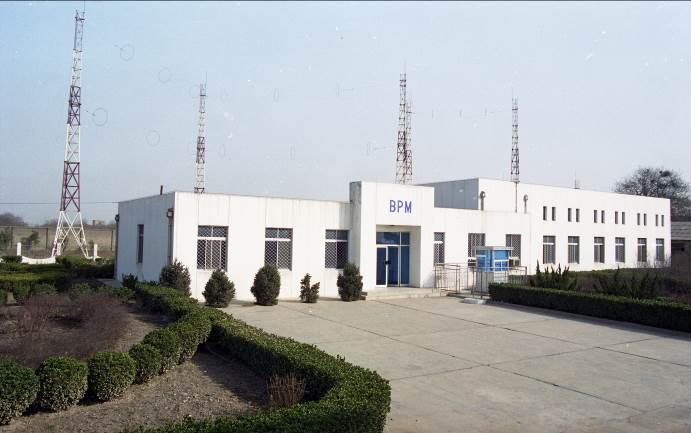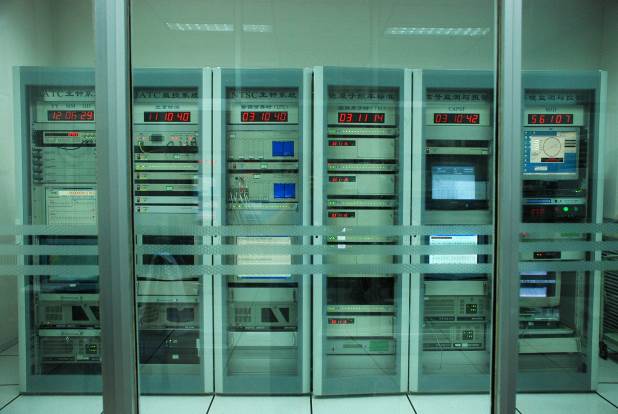BPL and BPM time service systems are composed of primary standards of time and time keeping system, standard time broadcasting and control system, BPL long wave time broadcast station and BPM short wave broadcast station which is proved to be one of the National Great Scientific Project in 1988. This system is at the service of national economy and several national departments and this system is for the use of national standard time and time frequency. Meanwhile, this system provides reliable guarantee for the development of national economy.
BPM time broadcast station began to be constructed in 1966, and tried to broadcast the standard time signal in 1970. In 1973, in order to satisfy the need of pelagic time service, BPM time broadcast was expanded. After the sanction of the State Council, the station formally broadcast the standard time and frequency in 1981.
At present, BPM continually broadcasts the Chinese standard time UTC (NTSC) and universal time UT1 for 24hours every day at 4 frequencies (2.5MHz, 5 MHz, 10 MHz and 15 MHz). The radio signal can cover 3000km radius scope. User can receive the standard time with the accuracy of millisecond magnitude.

BPM short wave time broadcast station
BPL long wave time broadcast station began its construction in 1973. The small power test station was completed and began the task of national time service in 1978. The High-Power Time Service Station was established and officially substituted the Small-Power test station for broadcasting standard time and standard frequency signal after passing the national technology by the State Science and Technology Commission (now the Ministry of Science and Technology) in 1986. The accuracy of BPL long wave time service reaches microseconds (millionths of a second). The completion of long wave time service station has made China's land-based radio time service accuracy and reaches the international advanced level. This achievement won the first prize of national scientific and technological progress in 1988.
BPL long wave time transfer transmits Loran-C signal whose center frequency is 100KHz, the repetition pulse group period is of 60ms, the effective power of the transmitter pulse peak value is about 2000KW, and the pulse peak value of effective radiated power by antenna is bigger than 1000KW. The radius of ground wave transmitted signal is 1000 to 2000km and that of the ground wave combined with the sky wave is about 3000km which is enough to cover China’s land and coastal waters. In 2009, BPL completed its technical upgrading and transformation. Now it is transmitted 24 hours a day with new functions as digital modulating, time code and pulse time data. The user receiver has realized the full-automatic timing functions. China has reached the international advanced level in the technology of Loran-C auto time service.

New BPL long wave time broadcast station
The standard time keeping system is composed of high performance atomic clock group, high precise time and frequency measurements comparison and control system and high-precise international comparison system. It takes on the role of the local atomic time TA(NTSC)and local UTC (NTSC) time keeping, generation, contributing to International Atomic Time (TAI). NTSC has also set up a Joint Atomic Time of China UTC (JATC) system with some relevant departments.
At present, NTSC has twenty-two high performance cesium clocks (HP5071A) and eight hydrogen masers used in primary time standard keeping. NTSC carries on the GPS common view comparison system with BIPM and provides the time transfer result to BIPM periodically. NTSC takes part in calibrating the GPS receiver system organized by BIPM every year. NTSC carries on the high precise two way satellite time and frequency transfer (TWSTFT) with NICT (Japan), OP (France), PTB (Germany), VSL (Holland). Among all the results, the one between NTSC and PTB is specifically contributed to TAI. The main performance index of primary time standard keeping reaches the international advanced level.

NTSC primary time comparison and measurement system
Besides the long wave and short wave time service, to meet the need of various users, NTSC established low frequency time code time service, network time service, telephone time service, etc..
BPC low frequency time code time service station is located in Shangqiu, Henan Province. With an operating frequency of 68.5 kHz, it can broadcast time code information regularly for 21 hours every day. The antenna radiation powder is about 50KW, the ground wave signal coverage radius is about 1000km, and timing accuracy reaches sub millisecond. It mainly provides standard time and standard frequency services for users and carries out time frequency related research.
Telephone Time Service System established in 1998, and it can be fit for the users who require that the time precision should be from 0.3-0.5 seconds. Service Call: +86 (0)29-83895117
Network Time Service (NTS) was tested successfully at 2001. The precision of NTS is <100ms (LAN), <50us (WAN).